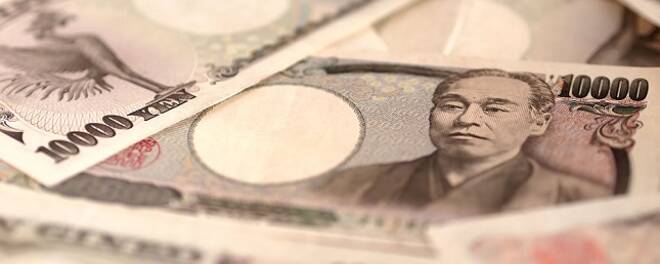Advertisement
Advertisement
USD/JPY Fundamental Daily Forecast – BoJ to Keep Rates Ultra-Low as it Prepares for Trade War Damage, Emerging Market Turmoil
By:
According to reports, as the U.S.-China trade war casts a shadow over the global economy, and new issues arise in the emerging markets, the Bank of Japan is shifting focus to protecting the domestic economy and putting its long-held inflation goal on the back burner.
Emerging market contagion, expectations of additional Fed rate hikes and fear of an escalation of U.S.-global trade disputes are contributing to a sharp rise in the Dollar/Yen early Tuesday. Volume is expected to begin picking up today after the long U.S. holiday week-end. This could lead to heightened levels of volatility.
At 0618 GMT, the USD/JPY is trading 111.327, up 0.231 or +0.21%.
Weak manufacturing data especially in China and Euro is helping to erode optimism due to the lingering threat of a global trade war. The weakness in these two powerful economies is putting a strain on emerging market currencies amid the fear of escalating global trade frictions.
Pressure is being felt in currencies such as the Argentine Peso, Turkish Lira, South African Rand, Brazilian Real, Indonesian Rupiah and Indian Rupee. This is sending investors into the safety of the U.S. Dollar which is helping to boost the USD/JPY.
On Monday, Indonesia’s Rupiah fell to its weakest level in more than 20 years and the country’s central bank reportedly said it would intervene in foreign exchange and bond markets. With inflation data at 3 percent, there is no real need for a rate hike at this time, however, Indonesia is following the blue print laid out by Turkey and Argentina last month. They both raised rates to stop their currencies from plunging in August.
Forecast
According to reports, as the U.S.-China trade war casts a shadow over the global economy, and new issues arise in the emerging markets, the Bank of Japan is shifting focus to protecting the domestic economy and putting its long-held inflation goal on the back burner.
This shift was behind the central bank’s adjustment to its large-scale monetary easing policy in late July. The bank let the benchmark long-term policy rate fluctuate more widely around zero.
The widening of the rate band raised the ceiling on long-term rates to 0.2% from 0.1%. It also in effect lowered the floor, from minus 0.1% to minus 0.2%. Meanwhile, the bank introduced forward guidance, saying loose monetary policy will continue for the foreseeable future.
Financial markets read these moves as contradictory, hinting at both tightening and prolonged easing. Traders also read this move to indicate that the bank was approaching an exit to its long-running easing policy. However, they were wrong. The BOJ was actually preparing for fallout from a trade war and worries about emerging markets.
Just three days ago, BoJ Governor Haruhiko Kuroda dismissed speculation that the central bank was planning to adjust its ultra-loose policy. He said the BoJ will not raise interest rates “for quite a long time”.
The USD/JPY could strengthen this week on safe-haven buying and the divergence between the hawkish U.S. and dovish BoJ monetary policies.
About the Author
James Hyerczykauthor
James is a Florida-based technical analyst, market researcher, educator and trader with 35+ years of experience. He is an expert in the area of patterns, price and time analysis as it applies to futures, Forex, and stocks.
Did you find this article useful?
Latest news and analysis
Advertisement
